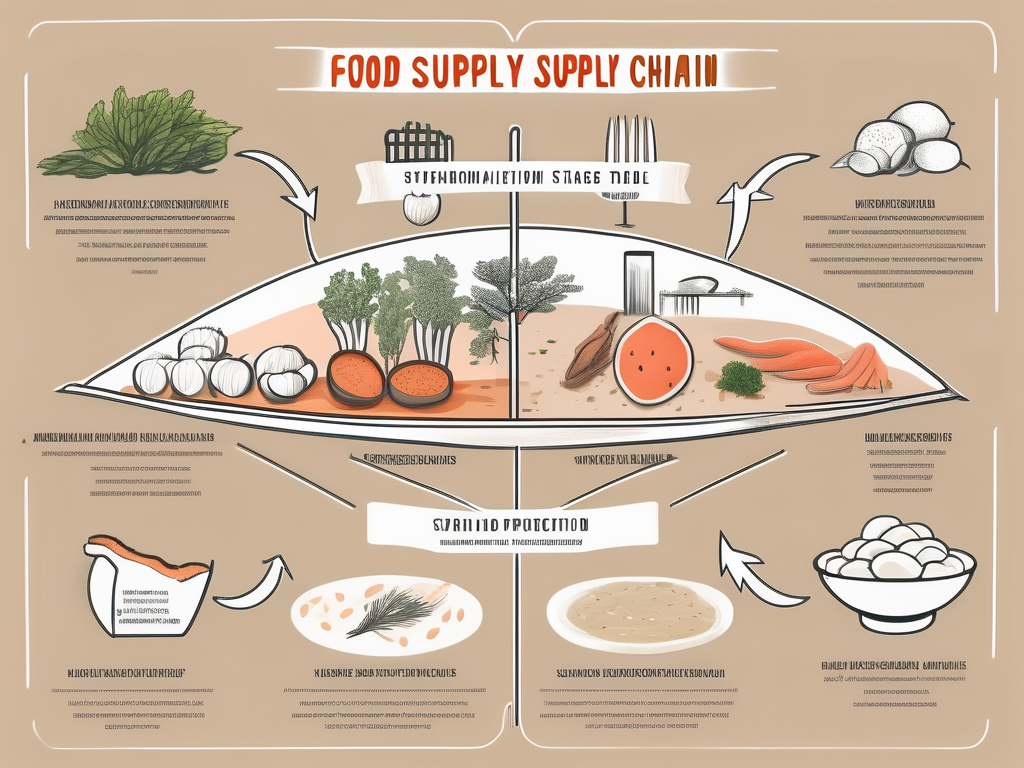
Mitigating High-Risk Ingredients in Your Food Supply Chain
In today's global food industry, ensuring the safety and quality of ingredients is of paramount concern. High-risk ingredients, such as those sourced from conflict areas or with high environmental and social impact, can pose significant threats to companies and consumers alike. Mitigating these risks is essential to safeguarding not only the integrity of food supply chains but also the well-being of individuals and communities. In this article, we will delve into the various aspects of mitigating high-risk ingredients in your food supply chain, exploring the dangers they present and the strategies for addressing them.
Understanding the Dangers of High-Risk Ingredients
High-risk ingredients bring a host of risks that could compromise the entire food supply chain. One particular factor contributing to these risks is the impact of Russia's invasion on ingredient choices. As geopolitical conflicts unfold, the availability and quality of ingredients can be greatly affected. This highlights the need for companies to assess the political landscape and carefully source ingredients from reliable and stable regions.

Furthermore, the growing call for stricter regulations on high-risk ingredients emphasizes the potential harm they can inflict. These ingredients are often linked to environmental damage, human rights abuses, or health concerns. Stakeholders, including consumers and investors, are increasingly demanding transparency and accountability in ingredient sourcing. Failure to address these concerns may result in reputational damage and even legal repercussions.
Moreover, the complexity of global supply chains adds another layer of risk when it comes to high-risk ingredients. With ingredients sourced from multiple countries and suppliers, ensuring compliance with various regulations and standards becomes a challenging task. Companies must implement robust tracking and monitoring systems to trace the origins of these ingredients and verify their quality and ethical sourcing practices.
Additionally, the interconnected nature of the food industry means that the impact of high-risk ingredients extends beyond individual companies. A contamination or ethical issue related to a particular ingredient can have far-reaching consequences, affecting not only the company's bottom line but also public health and consumer trust in the entire industry. This underscores the importance of collaboration and information-sharing among stakeholders to mitigate the risks associated with high-risk ingredients.
Navigating ESG Risks in the Food Industry
ESG (Environmental, Social, and Governance) risks play a significant role in ingredient sourcing and overall supply chain management. To effectively mitigate these risks, companies need to develop comprehensive strategies that address the environmental impact of ingredient production, the social implications of their sourcing practices, and the governance structures in place to ensure responsible ingredient procurement.

Strategies for Mitigating ESG Risks in Food and Agriculture Business
Implementing sustainable agriculture practices is one strategy to reduce the environmental impact of ingredient sourcing. This includes promoting regenerative farming techniques, minimizing chemical use, and prioritizing biodiversity conservation. By adopting these practices, companies can reduce their carbon footprint and promote a healthier ecosystem.
Social risks, such as labor rights violations or community displacement, can be mitigated by engaging with suppliers that uphold fair labor practices and respect local communities. Regular audits and supplier verification processes can ensure compliance and help build trusted partnerships with suppliers who prioritize social responsibility.
Furthermore, companies can go beyond compliance and actively invest in community development programs. By supporting education, healthcare, and infrastructure initiatives, companies can contribute to the well-being and prosperity of the communities they operate in, fostering positive social impact.
Lastly, effective governance practices are critical to establishing a responsible ingredient procurement framework. This involves setting clear policies, implementing traceability systems, and actively monitoring supplier performance. By fostering transparency and accountability, companies can identify and address any potential risks or non-compliant behaviors.
How Companies Can Proactively Address ESG Risks in Ingredient Sourcing
Proactive measures are essential in addressing ESG risks in ingredient sourcing. This includes conducting thorough risk assessments and due diligence on suppliers to identify potential risks. By establishing robust risk management processes, companies can mitigate the chances of encountering high-risk ingredients and ensure the integrity and safety of their supply chains.
Moreover, companies can leverage technology and data analytics to enhance their risk management capabilities. By utilizing advanced tracking systems and real-time monitoring tools, companies can detect and respond to ESG risks more efficiently, ensuring the integrity of their ingredient sourcing practices.
Collaboration with industry organizations, NGOs, and government entities can also greatly assist companies in navigating ESG risks. These partnerships can provide valuable insights, best practices, and resources that enable companies to make informed decisions about ingredient sourcing and supply chain management. Additionally, collective efforts can drive industry-wide change and establish higher standards for responsible ingredient procurement.
In conclusion, addressing ESG risks in the food industry requires a multi-faceted approach that encompasses sustainable agriculture practices, social responsibility, effective governance, proactive risk management, and collaboration. By prioritizing these strategies, companies can navigate the complex landscape of ingredient sourcing while minimizing their environmental impact, promoting social well-being, and ensuring the integrity of their supply chains.
Conclusion
As the global food industry continues to expand and evolve, mitigating high-risk ingredients in the supply chain is critical for ensuring the safety, integrity, and sustainability of our food systems. By understanding the dangers they present, implementing effective strategies, and actively addressing ESG risks, companies can mitigate the potential harm associated with high-risk ingredients. Through collective efforts and responsible practices, we can build a resilient and ethical food supply chain that prioritizes the well-being of both consumers and the environment.

Take Action with Responsibly
Understanding the complexities and risks in your food supply chain is just the beginning. With Responsibly, you can transform your due diligence process and ensure sustainable, ethical sourcing practices across your entire supply chain. Our AI-driven platform provides in-depth insights into supplier sustainability, from human rights to decarbonisation. Don't wait for risks to emerge���proactively manage them with our comprehensive risk assessments and real-time data analysis. Ready to enhance your sustainable procurement and supply chain management? Book a demo today and take the first step towards a more responsible and resilient food system.

